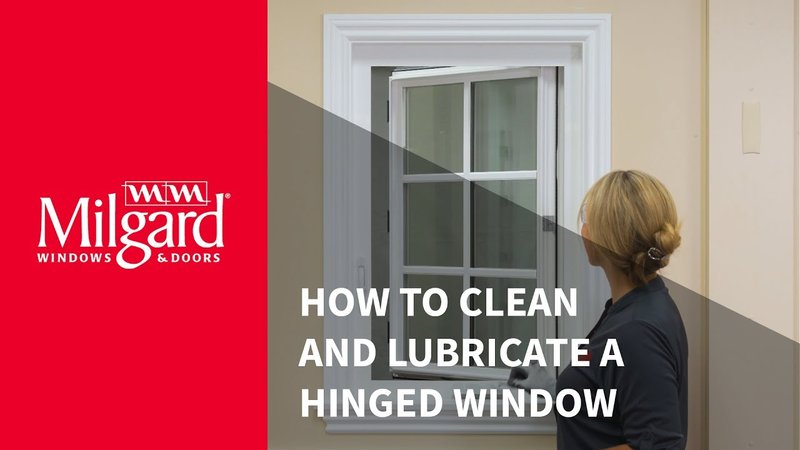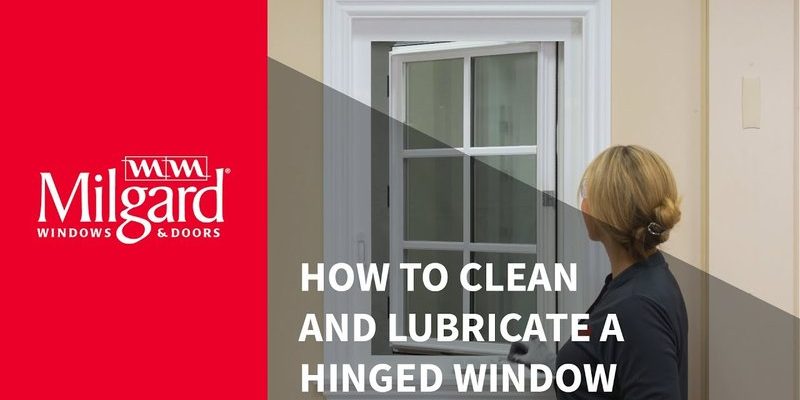
Rain doesn’t just make things slippery, oddly enough. It actually *washes away* protective oils and gets into all the nooks, turning clean, smooth movement into a sticky, grinding mess. Whether you’re dealing with a sagging garden gate, a stubborn mailbox lock, or a remote-controlled garage door latch, everything with moving metal parts needs a little love when it lives outdoors. And trust me, learning to lubricate hardware that’s exposed to direct rain isn’t just smart—it’ll save you money (and headaches) down the line.
So let’s break down how to do it right: the tools you’ll need, what kind of lubricant to pick, how to prep, apply, and maintain your hardware—even with wild weather in the mix.
Why Rain Is So Hard on Outdoor Hardware
If you’ve ever looked at a rusty door hinge or a frozen padlock after a rainy spell, you’ve witnessed just how fast water can ruin metal. Rain doesn’t only *wet* hardware—it chips away at the protective finish, sneaks inside tiny gaps, and leaves behind a trail of corrosion. What’s worse, when the rain dries up, it often pulls any leftover lubricant with it, leaving bare metal to grind against itself every time you use the handle.
You might be wondering why regular oil or grease doesn’t work here. Here’s the thing—most basic oils don’t hold up outdoors. They wash away, leaving hardware just as vulnerable as before. This is even trickier for anything with electronic parts, like a remote-operated gate latch or a battery-powered lock. Any moisture can cause code syncing issues, short circuits, or just a plain old jam.
That’s why choosing the right lubricant, and applying it the right way, really matters if you want hardware to last outdoors—no matter what brand or type you’ve got.
Choosing the Best Lubricant for Rain-Exposed Hardware
Not all lubricants are created equal, especially when you’re fighting mother nature. While a can of classic WD-40 might seem like a fix-all, it’s only a short-term solution in wet weather. For outdoor hardware exposed to direct rain, you want something *specifically* designed to stick around when things get wet.
Here’s what to look for:
- Water-resistant greases: These are thicker than regular oils and form a barrier that keeps water out. Great for sliding doors, external hinges, and latches that get hammered by rain.
- Silicone sprays: Unlike petroleum-based oils, silicone lubricants don’t wash away easily and won’t break down in the sun—perfect for anything plastic or rubber-sealed.
- Graphite powder: If you’re dealing with locks—especially those you unlock with a remote or keypad—graphite powder is unbeatable. It won’t gum up in wet conditions or attract dirt that can mess with electronic syncing or reset codes.
Each type has its own vibe and best use. For example, a remote-controlled garage door latch may need a dab of waterproof grease on the rails, but the lock cylinder itself will last longer with graphite instead of oil.
Steps to Lubricate Hardware Exposed to Rain
Honestly, the process is easy once you know what to do. But patience is key—rushing it or skipping a step just means you’ll be back out there, fighting the same jam or squeak in a month.
- 1. Clean the surface: Rain brings dirt, and dirt loves to hang out in hardware cracks. Wipe away mud, grit, and old lubricant. If you see rust, a wire brush or a bit of steel wool does wonders. Don’t be afraid to spend a little time here—the cleaner things start, the better your new lubricant will work.
- 2. Dry thoroughly: Lubricant won’t stick to wet metal. After cleaning, wipe down with a dry rag. If you’re in a hurry, a bit of gentle heat from a hairdryer or a blast of compressed air can help.
- 3. Apply the right lubricant: Use a small brush, spray nozzle, or squeeze tube to get lubricant into hinges, latches, or keyholes. For a lock, puff graphite powder directly into the key slot and cycle the lock a few times. For sliding parts, a small paintbrush works well for grease.
- 4. Test and reapply if needed: Open and close the hardware several times to work the lubricant deep into the joints. If it still sticks or sounds rough, add a bit more and repeat.
Taking time on each step means you won’t have to troubleshoot constant jams, broken remotes, or stuck locks—rain or shine.
Extra Steps for Remote or Electronic Hardware
When you’re working with anything that’s remote-controlled or electronic—like a battery-powered gate latch, smart lock, or garage door—lubricating gets a bit trickier. Electronics and moisture are natural enemies, so you have to be even more careful.
- Avoid conductive lubricants: Some greases and sprays are conductive, which could cause a short circuit or mess up code syncing if they seep inside the circuit board or battery housing.
- Protect seals and covers: Always check rubber seals or weatherproof covers before applying lubricant. They’re your first defense against rain getting to the electrical parts.
- Use non-corrosive, electronic-safe sprays: For any sliding parts near a motor, use a lubricant that’s safe for plastics and electronics, like a dry-film spray or silicone-based product.
- Remove the batteries: If you need to lubricate close to the battery or controller, take the batteries out first. That way, if a little lubricant drips, you won’t fry the circuits or cause weird issues with pairing or remote functionality.
One accidental squirt of the wrong spray could mean hours of troubleshooting remote pairing, battery resets, or—even worse—a complete hardware replacement.
How Often Should You Lubricate Outdoor Hardware?
Scheduling regular lubrication isn’t just about keeping things quiet—it’s about making sure your hardware doesn’t fall apart right when you need it most. But how often is “regular,” really?
Here’s the thing: if your hardware lives in a spot that sees rain every time there’s a storm—like an unsheltered garden gate—you’ll need to revisit it every three to six months. If you live somewhere with salt air, heavy pollution, or extreme seasons, check even more often.
For remotes, automatic latches, or battery-powered gear, inspect at least every change of season. Remote-controlled gates or doors may also warn you with glitchy operation: if the code won’t sync, the latch sticks, or the battery drains faster, those are all signs it’s time for cleaning and lubrication.
Think of it like brushing your teeth. Do it a little, but do it often, and you’ll avoid big painful (and pricey) problems down the road.
Common Mistakes When Lubricating in Rainy Conditions
Even people who know their way around a toolbox sometimes mess up outdoor lubrication. It’s usually because rain makes things unpredictable. Here are some classic pitfalls:
- Using the wrong product: Grabbing kitchen oil, or worse, WD-40 as a cure-all. These aren’t meant for outdoor exposure and will just rinse away, leaving you with the same rusty problems.
- Skipping cleaning: Slapping fresh lubricant on top of mud or old gunk traps moisture inside. That means more rust, not less.
- Ignoring the weather: Don’t apply lubricant right before a downpour. It won’t have time to set, and you’ll have to do the job twice.
- Over-lubricating: Think more is better? Not here. Too much grease or oil attracts grime and can gum up locking or pairing mechanisms—especially for remotes or battery-powered parts.
If you do end up overdoing it, don’t stress. Just wipe away the excess, open and close the hardware a few times, and you’re back on track.
Alternatives and Preventative Solutions for Rain-Exposed Hardware
Sometimes the best way to deal with rain is to keep it off your hardware in the first place. Lubrication helps, but *prevention* is your friend if you want to skip a lot of maintenance and troubleshooting.
Here are some clever alternatives:
- Install weather shields: Small awnings or plastic covers over locks, latches, or remotes make a huge difference. Even a basic flap can keep most water off sensitive bits.
- Choose weatherproof hardware: Some brands sell hardware specifically made for outdoor use. Stainless steel, powder-coated metals, or heavy-duty plastic can go much longer between maintenance sessions.
- Move electronics indoors: If you’re using a remote or battery-powered lock, see if you can mount the electronics inside a porch, box, or behind a cover. Less water = fewer issues syncing, resetting, or dealing with dead batteries.
- Regular inspections: Don’t wait for a problem to appear. Check every month or two (especially during rainy seasons) for any rust, sticky spots, or dead zones in remotes.
Honestly, the less direct water your hardware faces, the longer every drop of lubricant will last—and the less time you’ll spend out in the rain with a can of spray in hand.
When to Call a Professional
Sometimes, no matter how careful you are, an outdoor lock, hinge, or remote latch just won’t behave. Here’s when it’s time to admit defeat and get help.
- Severe rust or broken parts: If the metal is flaking apart, or a spring won’t return, lubrication won’t bring it back. Replacement or professional repair is the way to go.
- Persistent remote or electronic issues: When you’ve cleaned, lubricated, and checked batteries/pairing codes, but your device still won’t sync or unlock reliably, call a pro. The problem might be deeper inside the electronics, not just surface moisture.
- Hardware on doors or gates with safety requirements: If it’s for a security gate, garage door, or anywhere safety is key, don’t gamble. Bald tires on a car are bad news; so is a jammed safety latch.
There’s no shame in calling a pro—you’ve done your part to keep things running. Sometimes, hardware just gives up the ghost, especially after years in the weather.
Final Thoughts: Keep Your Outdoor Hardware Running Smoothly, Rain or Shine
Keeping your outdoor hardware working well in wet weather isn’t rocket science, but it does take a little effort and the right know-how. Clean regularly, pick a *water-resistant lubricant*, and don’t forget about those electronics, remotes, and battery-powered bits—they need just as much care. Preventing rain from hitting your hardware in the first place is always your best bet, but when that’s not possible, a little scheduled TLC goes a long way.
If you stay on top of maintenance, your hardware—no matter the type, brand, or how intense the weather—will open, close, and *sync* just as easily as the day you installed it. That means fewer headaches, less troubleshooting, and more time enjoying your garden, gate, or garage door—no matter how hard it rains.
